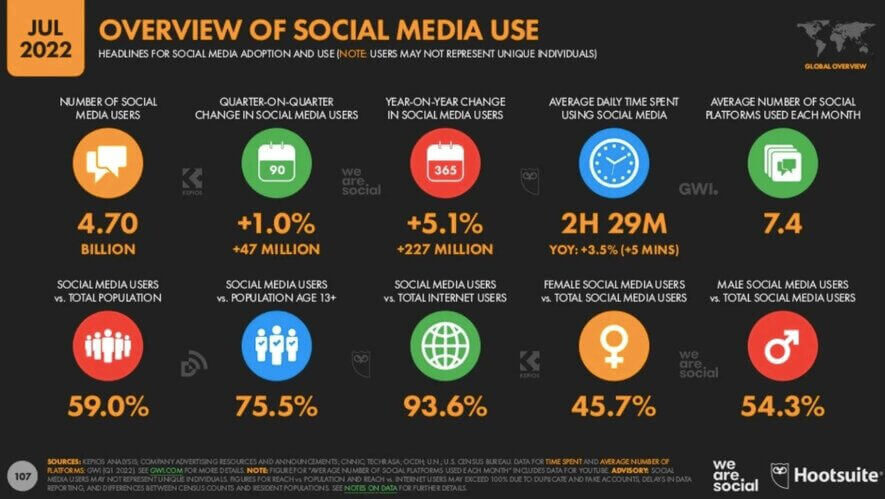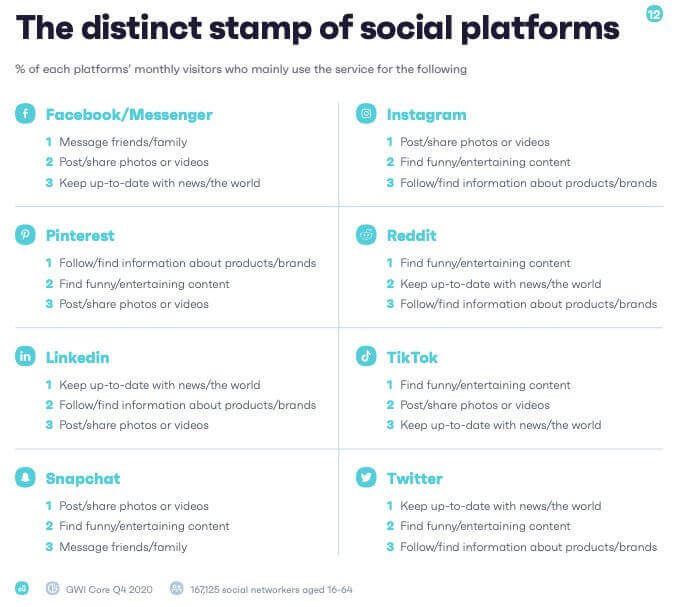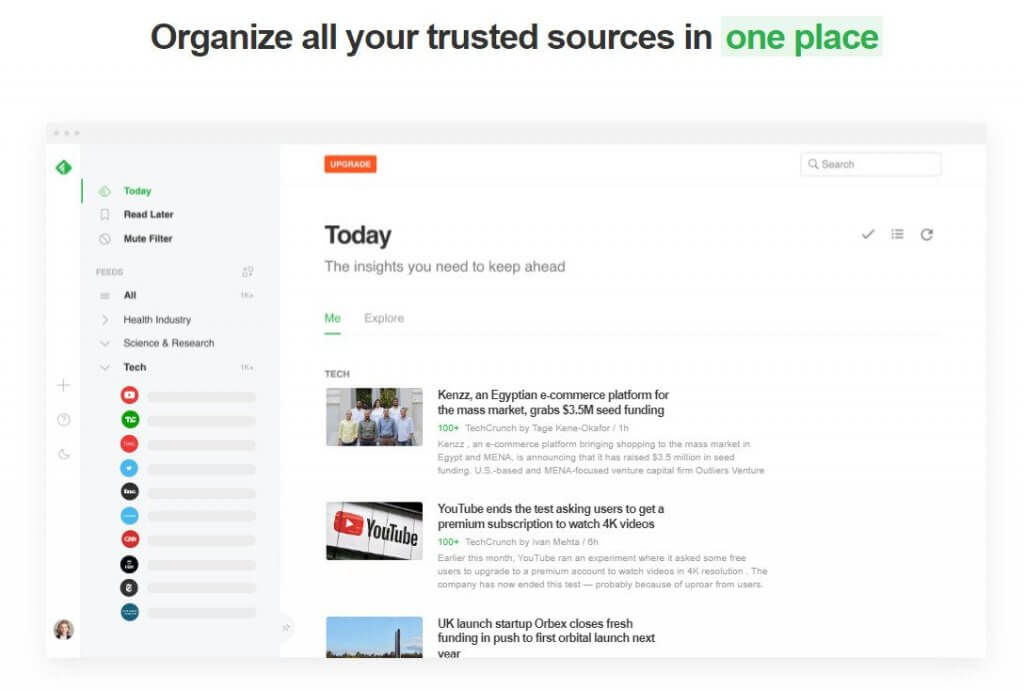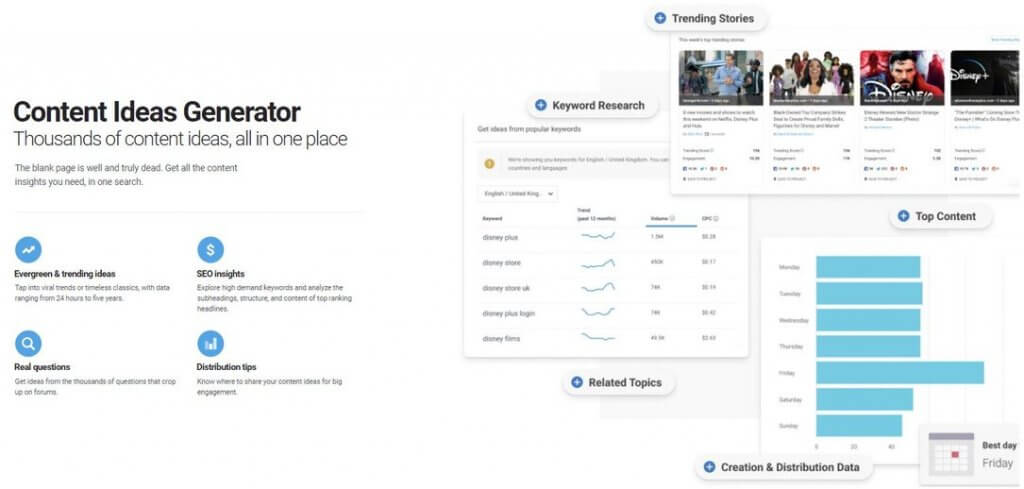Even the big players are guilty of this: overly self-promoting in every brand-owned channel. Not only is it a pet peeve for potential customers. It also makes people run away from such communication faster than you can say the word self-promotion.
Curated content is the cure. Simply put, it is any piece of engaging, relevant content your audience might be interested in, inside your niche or close to it. The trick is not to prepare the content shared on social media platforms or email newsletters yourself but to analyze materials published by others and find valuable posts to reshare. By selecting and curating a list of relevant, original pieces to share with your audience, the brand grows to a thought leader status in your audience’s eyes.
Curated content is also a way to avoid sounding like an all-about-me-me-me toddler or a grandpa telling the same old stories during every family gathering.
It helps to differentiate sources used in the brand’s communication channels to ensure people are interested and enjoy hearing from you. Take your audience on a unique ride around the topics your brand knows best. No self-promotion, pure expert knowledge.
Now that you know what curated content is, let’s focus on how to do it right.

Social media marketing made easier (especially for teams)
Automation, analytics, reporting, scheduling, and more. Try NapoleonCat and save 90% of your time spent on your marketing tasks. Try it for free:
Try NapoleonCat free for 14 days. No credit card required.
How to curate content like a true professional?
As a social media expert or content specialist, you know that preparing and sharing relevant content is vital for marketing activities to take off quickly. According to Content Marketing Institute, 88% of marketers have reached their goals by implementing content curation in their marketing strategy.
Speaking to social media marketers daily, we often find that achieving satisfactory results can still be a problem. Why is that?
Save time and human power
Producing original content and assets takes a lot of time and resources.
It’s impossible to get everything done in the time we allocate for work (work-life balance, anyone?). Curating content saves the trouble of preparing a lot of assets at the same time, especially when there’s not enough data, skill, or budget to do it inside your team:
- research reports and surveys,
- case studies,
- videos,
- infographics,
- e-books,
- podcasts,
- webinars,
- live streams,
- articles,
- interviews,
- and data graphs.
Speaking of human power, as quality content creation takes time, your team has less time to promote and engage with what you’re producing on a daily basis. Sharing outside sources and articles complementary to what you offer in your brand’s newsletter or social media channels is a lifesaver. You get more time to work on longer, better-researched articles and strategies for promoting the in-house pieces.
Avoid spammer status, be the thought leader instead
As digital customers, we like choices and want the options to be easy to consume. According to the latest study by Smart Insights, each day, over 59% of global Internet users share and consume an unimaginable amount of content:

When following any brand, no one likes when a company keeps popping up everywhere, talking about themselves all the time. It’s spammy and not attractive to potential customers. People learn quickly that it’s not worth following specific companies and their social media accounts.
No diversity in content marketing strategy makes the followers leave, as dull and predictable social channels and email newsletters are considered spammy.
What is great about content curation is that utilizing this tactic helps to avoid spammer status in your audience’s eyes. It builds a position of expertise, a thought leader if you will. With the right curated content strategy, your company can really be different and establish itself as a knowledge expert in any niche.
And it delivers the best customer experience by providing a relevant and easy-to-find list of the best content pieces and data sources. No need to search the web, materials are right there, at their fingertips, and you are the one providing it all.

Protect your social media from offensive comments and SPAM
Automatically hide or delete comments containing spam under your organic posts and ads. Try it for free:
Try NapoleonCat free for 14 days. No credit card required.
Let others worry about the budget spend
Did you know that only 3% of marketers plan to decrease their budget spending in the near future? A whopping majority of 66% of companies want to up their spending.
Money is essential in any business. And unless you have an endless supply of cash to burn, think strategically about content marketing spending.
Take a quick look at GlobalWebIndex social media trends report.

Almost all social media platform users post and share either original content or anything they find relevant. That includes companies paying big bucks to stay ahead of others and be relevant on social channels.
There is potential to use this to your advantage, budget-wise.
The content you post does not have to be initially made by you. It only has to be relevant.
Suppose you look to spice up your channels.
In that case, chances are that someone, who is not your competitor, has already written or recorded a video about anything you want to post.
Reshare the best blog, video, infographic, or podcast. Give credit loudly. Authors will appreciate the promo, and as a thank you, they will engage and reshare info about it. Thus, your brand stands out to new, potential clients.
Speaking of reshares…
Amplify your partnerships and outreach efforts
Content promotion strategy requires partnering with other brands to share and promote link-building efforts.
It also has to have an outreach process to include your brand’s content in articles and pieces by other relevant brands with an impeccable online presence.
While formulating a content curation strategy, don’t forget any piece that mentions or praises your brand or products. Link building is essential for any business wanting to grow online, making Google like you. But even so, make sure to learn about the link building benefits before you start.
Praise your work. After all, the links and mentions you gain are not on spammy websites, right? So, if you ask me what curated content is, I’d say the best SEO articles, guest blogs, and link-building are vital.
Tools to find the best curated content materials
Where to find the best content pieces to reshare in your social media channels and newsletters? Here are a few good places to start.
Feedly
Feedly is an excellent tool to ensure your senses won’t get an information overload. Each day our social media channels and mailboxes get loaded with content from every possible side. Feedly helps to put your thematic content streams in an orderly way.
You can organize content feeds by topics or hashtags and create streams for different angles of the business (from very technical to very soft and conversational pieces).
Feedly works similarly to an RSS feed, but it’s much more powerful. The possibility of controlling different feeds is empowering to the user. It makes you decide what you want and how you will engage.

NapoleonCat
NapoleonCat can help you with the content curation process. A social media analytics tool is much more powerful nowadays than social stats reports on any platform you use.
In the case of NapoleonCat, you’ll find in-depth competitive analytics that can help research content published by others and find valuable posts to reshare.

Pinterest is a gold mine for a visual representation of any kind. Of course, it is full of house decor, DYI-everything ideas, and cooking tips. But no other tool has such power in researching infographics, graphs, and data visualization for your online audience.
Content creators use Pinterest as an aggregator and source of traffic to their main channels. You may use the platform as an inspiration to find step-by-step guides, infographics, or real-life pictures to illustrate your vision.
Recently, with the rise of video, Pinterest started showing relevant results of short video content that gets popular on social media platforms.

BuzzSumo
The Big Kahuna of content research platforms. I like BuzzSumo for one main reason: it gets the job done, no matter the language.
Using content discovery and content research functions makes finding trending topics easy and fast. Moreover, BuzzSumo helps search for influencers in any niche, making it easy to find thought leaders in yours.
Following relevant accounts found via this tool and resharing their content has two benefits:
- Influencers are the people in the know, so all new, hot topics are discussed widely and in real time. This means you jump on the wagon of trends early and are not the last to report essential news and issues.
- By amplifying influencers’ efforts to maximize the reach of their content, you gain their interest and, after a while, trust. An excellent place to start any future cooperation.

RSS feeds
I am sure you have favorite blogs and content creators you depend on when it comes to quality, well-researched content pieces.
Subscribe to their blog RSS feeds.
With so many flashy new tools out there, packed with every possible option, the good old RSS feed started to lose its relevance. However, it is still a good choice for finding relevant content pieces. Especially if you value simplicity and are on a budget.
How to select the best content curation tool for your company?
First off, don’t overdo it. Having helpful tools is one thing, but getting overwhelmed by choices is easy.
Decide on your budget. There is no need to get enterprise-level solutions if you are a solopreneur or a small company of 2-3 people. Start by subscribing to a free version of any solution that you think looks easy to handle. The more experience you get, the better you’ll know what features you are missing or which ones could help you speed up the entire process.

Track Competitors' Brands on Social Media
Find out what content works best for your competitors and when exactly it generates the highest engagement. Get competitive analytics for Facebook, Instagram, Twitter, and YouTube. Try it for free:
Try NapoleonCat free for 14 days. No credit card required.
Listen to the people and make a list
Start an excel file or a google spreadsheet to share with your business friends, coworkers, or your mastermind group. Ask them to put exciting content pieces in the file. Check it once in a while to see if there is potential to reshare with your audience.
Also, add to your excel or spreadsheet any materials your audience shares with you in comments, direct messages, or by replying to newsletters. If it was relevant to one person, maybe there is a possible angle you could use with a selected segment or your entire following.
Listen closely to complaints coming from your audience. Search for answers with the use of the content discovery platforms mentioned above. If the topic is gaining relevance, consider preparing original content about it. Otherwise, be smart about what topics you choose to focus on and what can be curated.
Content curation in summary
Content curation strategy only sounds fancy when you first hear of it. In reality, you are probably already curating content, doing it intuitively and (perhaps) inconsistently.
Try increasing it by putting content discovery and research into a process. Curate the best pieces to share on your social media and in newsletters and make a list of best-performing content pieces and content types.
Soon, you will discover if your audience prefers infographics over podcasts or blog articles over youtube videos. Use this knowledge as a guide to make content discovery even more relevant. Refine your content pieces list, share and repeat the whole process.
And don’t forget: content curation has many benefits and is one of the most straightforward tactics to implement in brand marketing strategy. Try it, learn by experience, and soon enough, you will become the content curation master.
Do you use content curation in your business? Did you learn something new, or did you already know the basics? Share any tips and tools in the comments.


